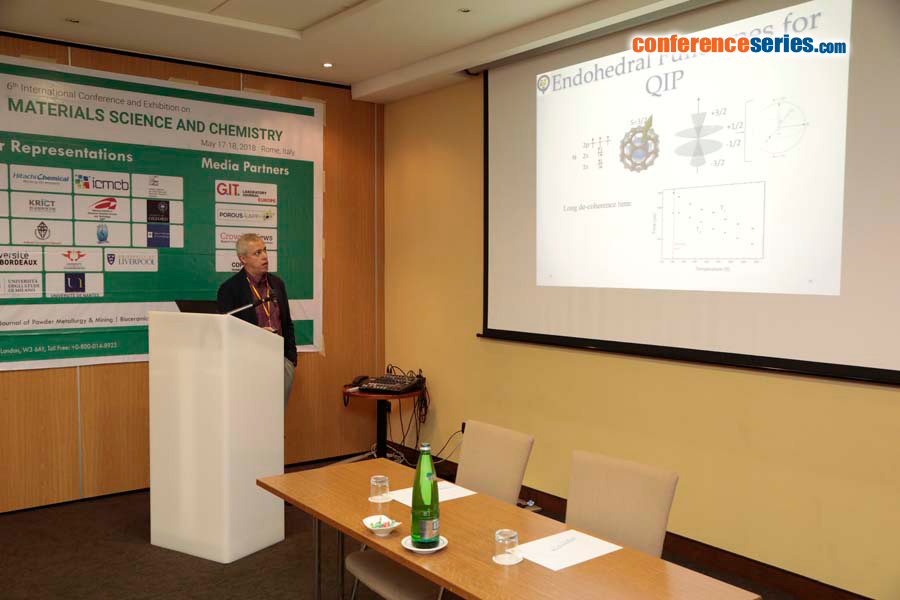
Kyriakos Porfyrakis
University of Oxford, UK
Title: Orientation studies of endohedral nitrogen fullerenes and their watersolubilization, progress and opportunities
Biography
Biography: Kyriakos Porfyrakis
Abstract
Paramagnetic endohedral fullerenes hold promise for a number of applications including quantum information processing and quantum sensing. In the case of endohedral nitrogen fullerenes such as N@C60 and N@C70, the nitrogen atom is almost completely isolated from the fullerene cage. This results in very long electron spin phase coherence times. The chemistry of endohedral nitrogen fullerenes has developed to a degree where it can be used to create functionalized systems with high aspect ratios that are prone to high alignment. This talk will deal with our recent results for several N@C60 and N@C70 derivatives aligned in liquid crystals. Within the liquid crystal matrix, we have achieved an order parameter factor Ozz of 0.61. This is a significant improvement on the best result that has been previously reported for endohedral fullerene derivatives. More importantly, this allows us to manipulate the intrinsic zero-field splitting (ZFS) of the spin resonance signal. By in situ rotating frozen endohedral fullerenes inside the magnetic field of the ESR spectrometer, we deliberately changed the orientation distribution of the molecules and tuned the splitting energy of ZFS. We achieved remarkable agreement between experimental values and simulation data. This work can be expanded to control of dipolar coupling for a two-qubit gate. Also, the water functionalization of N@C60 will be discussed. We have developed the first water-soluble derivative of N@C60 through the covalent attachment of a single addend, containing two permethylated β-cyclodextrin units to the surface of the carbon cage. The linewidth of the derivative's EPR signal is highly sensitive to both the nature of the solvent and the presence of Cu(II) ions in solution. Thus, we have shown that it has the potential to be used as a quantum sensor for other spin-active species.





